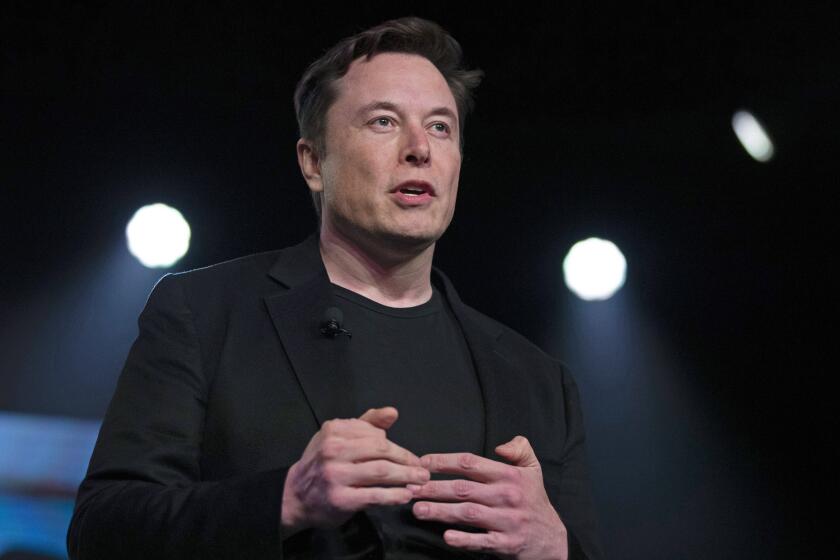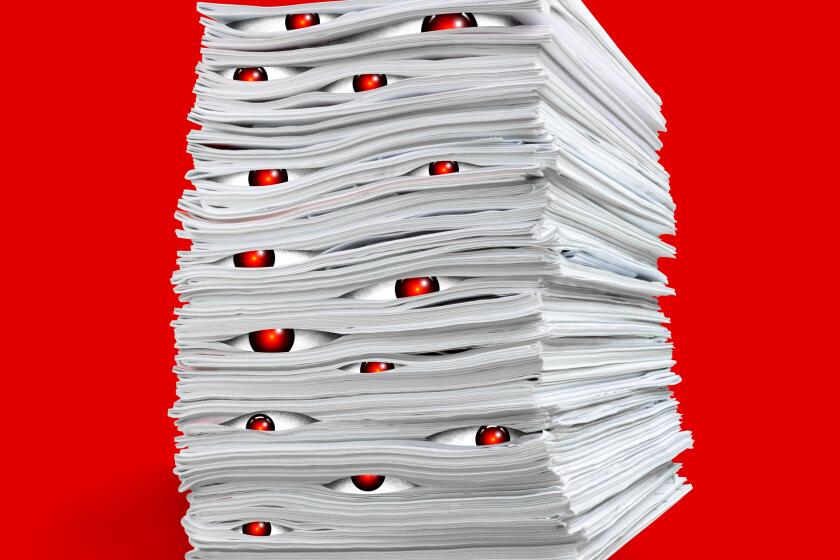Uber adds the option to tip drivers, and you’ll pay for making them wait

The new features are the first step in what Uber is billing as “180 days of change” for its drivers. (June 20, 2017)
- Share via
Uber is enabling passengers to tip its U.S. drivers with a tap on its ride-hailing app for the first time, part of a push to recast itself as a company with a conscience and a heart.
Besides the built-in tipping option announced Tuesday, Uber is giving drivers an opportunity to make more money in other ways.
Riders will be charged by the minute if they keep an Uber driver waiting for more than two minutes. Uber also is reducing the time that riders have to cancel a ride to avoid being slapped with a $5 fee from five minutes to two minutes after summoning a driver.
Uber won’t take any part of the tips given drivers. The San Francisco company will continue to collect a portion of ride-cancellation fees, as well as the new waiting-time charges.
The tipping option, long available in the app of Uber rival Lyft, will be available beginning Tuesday in three cities: Seattle, Houston and Minneapolis. Uber plans to make it a staple in its app in all U.S. cities by the end of July. The other features are to roll out in August.
Uber had spent a long time sticking by its decision not to build in a tipping option, even though drivers commonly requested the feature.
“We felt it would be better for riders and drivers to know for sure what they would pay or earn on each trip — without the uncertainty of tipping,” Uber said in an April 2015 blog post. “Riders tell us that one of the things they like most about Uber is that it’s hassle-free. And that’s how we intend to keep it.”
The current attempt to smooth over the company’s sometimes testy relationship with drivers is part of a broader effort to reverse the damage done to Uber’s reputation by revelations of sexual harassment in its offices, allegations of the theft of trade secrets and an investigation into its efforts to mislead government regulators.
“These drivers are our most important partners, but we haven’t done a very good job honoring that partnership,” said Rachel Holt, regional general manager for Uber in the U.S. and Canada. Holt is part of the leadership team running Uber as Chief Executive Travis Kalanick on a leave of absence.
The expanded earnings opportunities are the first step in what Uber is billing as “180 days of change” for its U.S. drivers. Holt declined to describe what is planned during the rest of the campaign.
While building the world’s biggest ride-hailing service over the past eight years, Uber also developed a reputation for cutthroat tactics that have occasionally outraged government regulators, its drivers, its riders and its own employees.
The company’s hard-charging style also has caused legal headaches.
The U.S. Justice Department is investigating Uber’s past usage of phony software designed to thwart regulators trying to curb the growth of its service. Uber also is fighting allegations that it’s relying on a key piece of technology stolen from Google spin-off Waymo to build a fleet of self-driving cars.
Drivers aren’t the only people Uber is trying to treat better. After an internal investigation uncovered multiple instances of sexual harassment, bullying and other boorish behavior within the company, Uber fired more than 20 employees and pledged to create a more harmonious culture for its employees.
A more extensive report compiled by the law firm of former U.S. Atty. Gen. Eric H. Holder Jr. chastised the company’s leadership and recommended a long list of changes that Uber’s board adopted. When it released the Holder report, Uber also said Kalanick was taking an indefinite leave of absence amid criticism of his free-wheeling management style and after the death of his mother in a boating accident.
As part of its penance, Uber emailed a letter to riders in New York City last week apologizing for its missteps.
“As a company, we have faced some hard truths,” Uber wrote. “In expanding so quickly, we failed to prioritize the people that helped get us here. Ultimately, the measure of our success is the satisfaction of our riders, drivers and employees — and we realize that we have fallen short.”
Kalanick exemplified Uber’s sometimes uneasy relationship with its drivers earlier this year when he got into an argument with a driver who was unhappy with his pay. The encounter was captured in a video posted online.
Uber also has wrangled with drivers in the courts over its insistence on classifying them as contractors instead of employees to avoid paying them benefits and overtime. So far, the company has prevailed in that battle.
Holt said the company talked to thousands of drivers while listening to plenty of complaints before making the moves to boost drivers’ incomes. Uber also is trying to make it easier for drivers to transfer their earnings into personal accounts more quickly. It’s also allowing more drivers to designate the routes that they want to travel to keep them closer to a preferred destination.
Uber has business reasons to improve its image. The widespread publicity about the company’s bad behavior threatens to turn off drivers and riders alike, giving them incentive to switch to Lyft instead.
A backlash like that could deepen Uber’s losses, which totaled $2.8 billion last year alone, threatening to make the company less valuable to investors. Uber was valued at nearly $70 billion the last time it raised money.
ALSO
Uber CEO Travis Kalanick is on leave. Now what?
Meet the man driving the future of Uber and Lyft in the California Legislature
Column: Uber’s big report proves the company still doesn’t understand its problems
UPDATES:
10:45 a.m.: This article was updated throughout with additional details and background information.
This article was originally published at 10 a.m.






